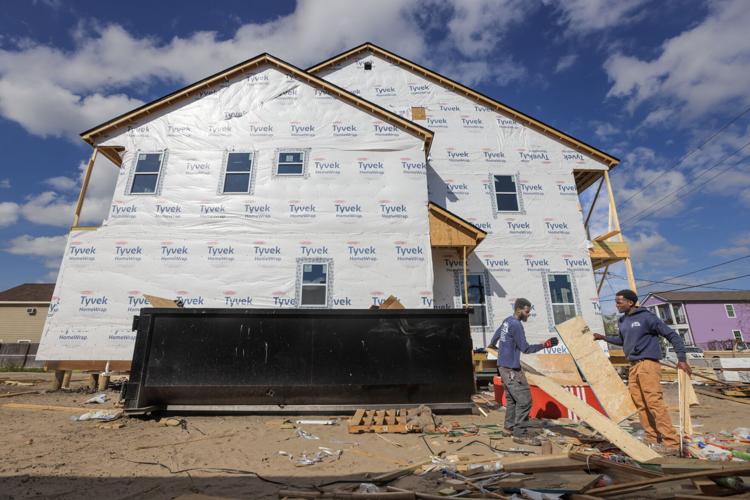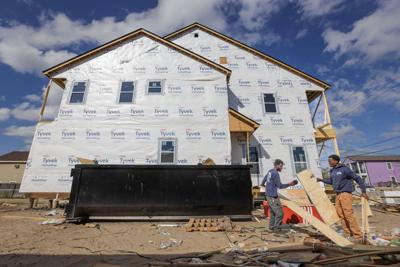Before the COVID pandemic, all but two of residential contractor Charles Aponza’s 15 employees lived in New Orleans’ Mid City and Seventh Ward neighborhoods, where most of the construction firm's job sites are located.
Today, amid the growing shortage of affordable housing in the city, all but two live outside of New Orleans in less pricey suburban areas of Metairie, Kenner or the West Bank.

Charles Aponza, owner of Brighter Horizons Construction Inc., works at a home construction site in New Orleans on Thursday, March 16, 2023. (Photo by Brett Duke, NOLA.com | The Times-Picayune)
“Their commutes are twice as long so that means they’re burning more gas,” said Aponza, who founded Bright Horizons Construction in 2017. “And some of them have to rely on the bus, which takes forever and isn’t always safe.”
Aponza’s situation illustrates how the shortage of affordable housing in New Orleans and Louisiana is playing out for workers and business owners. And the problem is growing. A new study released by affordable-housing advocates at the National Low Income Housing Coalition and Housing LOUISIANA suggests there are fewer than half of the necessary affordable and available rental homes or apartments in the state.
The study, which is done annually by the housing coalition, used 2021 data from the U.S. Census Bureau's American Community Survey on the demographic and housing characteristics from 3.5 million addresses nationwide. In Louisiana, there are 191,769 extremely low-income households, defined as households below the federal poverty line or making just 30% of the area's median income, but only 85,987 affordable rental homes available to them, the study found.
The federal poverty line is $30,000 in annual income for a family of four.
In the New Orleans-Metairie metro area, where nearly one-third of renters fall into the extremely low-income category, the problem is worse. There is only about one affordable rental unit available for every four households in need, the study showed.
“This is getting worse and we need to act,” said Andreanecia Morris, President of Housing LOUISIANA and executive director of Housing NOLA, which advocate for more affordable housing. “The problem is not going to solve itself.”
The local and statewide data mirrors national trends. The housing coalition study found a shortage of 7.3 million affordable and available rental homes for extremely low-income renter households across the U.S., meaning there are just 33 rental units for every 100 households.
The coalition is calling on Congress to continue funding the income and housing assistance programs that kept many low- and low-income households afloat during the pandemic.
Whack-a-mole
The study comes as affordable housing advocates are stepping up their criticism of short-term rentals and doubles-to-dorm projects in neighborhoods throughout the city.
But while there are efforts to limit short-term rental permits in residential neighborhoods and even some commercial areas, the city has consistently fallen short of its goals to create more affordable housing.
Last fall, Housing NOLA released its annual scorecard, giving New Orleans a failing grade in expanding the supply of affordable housing and arguing that the city needs 47,000 more affordable units.
Aponza says that the issues of affordable housing have a direct effect on his business. The longer commutes and longer days for his workers are translating into higher costs that Aponza then passes on to customers.

Charles Aponza, owner of Brighter Horizons Construction Inc., works at a home construction site in New Orleans on Thursday, March 16, 2023. (Photo by Brett Duke, NOLA.com | The Times-Picayune)
“Of course, I have to pay them more, though they’re spending that additional income just to get themeslves to work,” he said. “It’s really hard, especially with other cost increases. It’s like whack-a-mole — as soon as one thing comes down, something else goes up.”
Aponza said he also appreciates the irony that many of the houses his company has built are driving up home prices in neighborhoods that are now too expensive for his employees to live in.
"How do we sustain a city where the people who are needed to keep the city going can’t afford to live in it?" he said.




